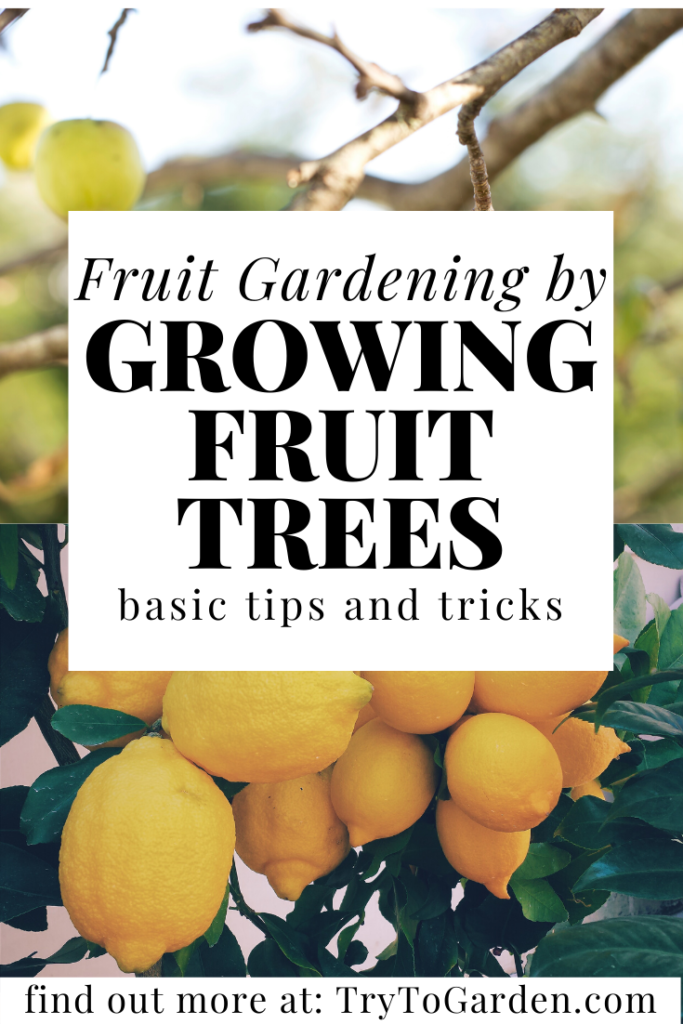This post contains affiliate links, which means I will make a commission at no extra cost to you should you click through and make a purchase. As an Amazon Associate I earn from qualifying purchases.
One thing I wanted to do after we moved into the new house was to plant a few fruit trees. I loved picking cherries at my Mom's and making sour cherry jam, getting apples from my backyard and making everything from my Instant Pot apple pepper jelly, to canned apple pie filling. My Great Aunt Fern made perfect pear butter, so I needed a pear tree, and apricots intrigue me. Growing fruit trees was undoubtedly in my future, and it was something I had to learn more about.

Being able to set up a backyard orchard is always a lot of fun, and gives the entire family the chance to enjoy fresh fruit during the summer and fall. Growing fruit trees in your backyard are all about choosing the right trees for your backyard habitat and hardiness zone. Whether you plant just one tree or an assortment of trees, selecting the trees is a small decision that makes a massive difference to how well the trees do, how much time you need to spend caring for them, and how much fruit you will be able to harvest.
Growing Fruit Trees
Use these tips to help you choose fruit trees that are suitable for growing in your backyard.
Understand the Soil:
However you decide to plant your fruit trees in the backyard, whether directly into the soil or in a garden bed, you must know the earth. Trees are super resilient and great at adapting to the ground they are planted in, but for fruit trees to bear fruit, they need to be able to find nutrient-rich soil. Well-drained, not packed soil that has a balanced pH level is best for fruit. Fertilizer can be added to amend the soil depending on the type of fruit trees you plant.
Sun and Space:
The next step to choosing fruit trees for the backyard is to check out the space you have available and the amount of sun those spaces receive. Fruit trees need plenty of sun, its the only way they can get enough energy to be able to grow their fruit. Make sure that you are not planting the trees in the shade or canopy of another tree. Space is another factor that is going to play into the health and growth of your tree choice. While there may be enough clear space on the ground for a tree to be planted, look up and determine how many feet on each side of a planting spot would a canopy have free space to grow.
Choosing a Tree:
Choosing the type of fruit tree comes down to two factors, what your yard can support, and what kind of fruit you want to grow. Whatever you grow, you will have an abundance of, so make sure it is a type of fruit that you love and can eat or process a lot of. Apple, pear, and peach trees produce larger fruit that the average family should be able to harvest and use with ease. Cherry trees produce a considerable number of smaller fruits that take a lot more time to collect and might need to be shared. A lemon, limes, grapefruit, or orange tree produces a decent amount of fruit, but with fruit like lemons or limes, you might also need to share because there are only so many lemons that the family can use.
When growing fruit trees, whatever kind of tree you decide on, make sure that the soil, sun, and space are there for the type that you decide on. Look for trees that are young and have not been out of the soil for too long - growing fruit trees that have healthy leaves and roots that are loose and not tightly coiled. Trees that already look like they are struggling to survive might not survive through the first season, or take one to two growing seasons to regain their health. Trust me - my apricot tree looked sad and is now making a comeback. This year? I add a dwarf pear tree!
Other articles you may find useful:
